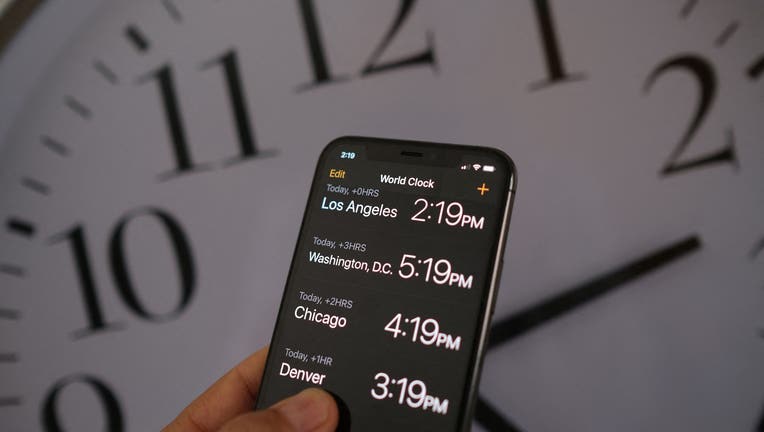When do we 'fall back'? How to prepare for the time change

FILE photo illustration (Photo by CHRIS DELMAS/AFP via Getty Images)
The switch from Daylight Saving Time to standard time is coming, when we’ll trade an hour of extra sleep for less daylight.
"Falling back" should be easier on your body than the spring time change, but it still may take a while to adjust your sleep habits, not to mention the downsides of leaving work in the dark or trying exercise while there's still enough light.
Some people with seasonal affective disorder, a type of depression usually linked to the shorter days and less sunlight of fall and winter, may struggle, too.
Here's what to know about the upcoming time change:
When does the time change?
U.S. Daylight saving time ends at 2 a.m. local time on Nov. 3, which means setting your clock back an hour.
Standard time will last until March 9 when we will again "spring forward" with the return of daylight saving time.
Does time change affect sleep?
Even an hour change on the clock can throw off sleep schedules — because even though the clocks change, work and school start times stay the same.
RELATED: Poor sleep quality linked to faster brain aging, study finds
That's a problem because so many people are already sleep-deprived. About 1 in 3 U.S. adults sleep less than the recommended seven-plus hours nightly, and more than half of U.S. teens don’t get the recommended eight-plus hours on weeknights.
Sleep deprivation is linked to heart disease, cognitive decline, obesity and numerous other problems.
How to prepare for the time change
Some people try to prepare for a time change jolt by changing their bed times little by little in the days before the change. There are ways to ease the adjustment, including getting more sunshine to help reset your circadian rhythm for healthful sleep.
MORE: New stroke prevention guidelines released by American Stroke Association
Will the U.S. ever get rid of time changes?
Some health groups, including the American Medical Association and American Academy of Sleep Medicine, have said it’s time to do away with time switches and that sticking with standard time aligns better with the sun — and human biology.
Most countries do not observe daylight saving time. For those that do — mostly in Europe and North America — the date that clocks are changed varies.
Two states — Arizona and Hawaii — don’t change and stay on standard time.
Lawmakers occasionally propose getting rid of the time change altogether. The most prominent recent attempt, a now-stalled bipartisan bill named the Sunshine Protection Act, proposes making daylight saving time permanent. Health experts say the lawmakers have it backward — standard time should be made permanent.

